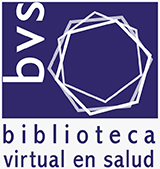TUBERCULOSIS AND SPATIAL ANALYSIS: LITERATURE REVIEW
Keywords:
tuberculosis, spatial analysis, geographic information systemAbstract
Objective: To evaluate in scientific articles addressing tuberculosis about using geographic information systems (GIS) and spatial analysis tools. Method: Literature review, whose search source was the Virtual Health Library (VHL), Scopus and Web of Knowledge (ISI) through the data portal of the Coordenação pessoal aperfeiçoamento de pessoal de nivel superior (CAPES). Key search terms, tuberculosis and spatial analysis, geographic information system and tuberculosis and characteristics of residence were used in combination with the MeSH search terms. Planning and analysis of the scientific literature in order to evaluate and discuss issues related to the use of spatial analysis techniques for the control of tuberculosis, were conducted. Results: Concerning the approach addressed/discussed, the main categories were “epidemiological situation” (51.0%) and “area with risk of tuberculosis transmission” (21.6%). The main findings are related to the high incidence of tuberculosis in areas of poverty, cluster of cases, association with overpopulation, identification of bacillus by genotyping, association with demographic and socioeconomic levels, and use of geographic information systems (GIS) to improve accessibility of actions of primary health care. Conclusions: We concluded that the spatial analysis helps to highlight the underreporting on health damages and to obtain more reliable rates through the mapping of cases. It also contributes to improve public management and reduction of inequities in health, and allows the optimization of material, financial and human resources in health. The geographic information systems and the spatial analysis tools represent a considerable improvement in the management of tuberculosis.
Downloads
Published
How to Cite
Issue
Section

This work is licensed under a Creative Commons Attribution 4.0 International License.












